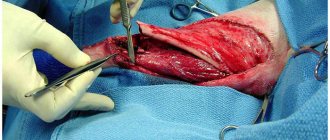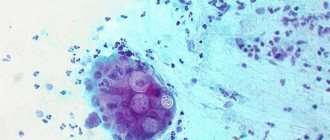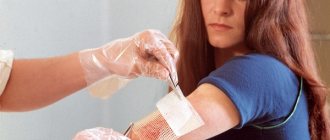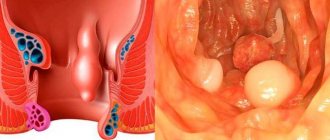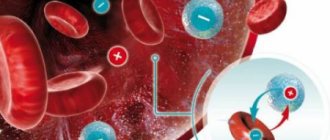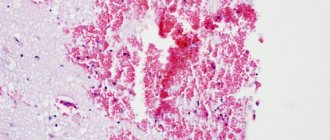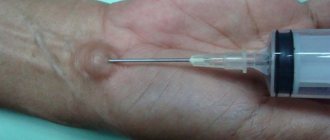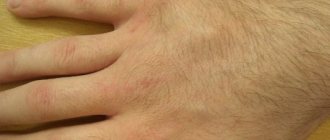A bruise is a closed tissue injury without violating its integrity. It can be easily obtained at home, at work or under other circumstances. Most often, first aid for bruises is sufficient. But there are also serious cases that require medical intervention at the emergency room or trauma department of the nearest medical institution.
What are sprains and bruises?
In medicine, bruises, muscle sprains, and ligaments are among the most common injuries. This problem is faced by athletes and other people leading an active lifestyle; age often does not matter.
A bruise is a closed injury caused by mechanical force. Damage extends to soft tissues, organs, joints, and bone tissues. Many bruises are associated with minor injuries that do not require therapy. In some cases, a bruise can pose a danger to health and life; sometimes they can be confused with fractures and dislocations.
In most cases, the ankle, knees, shoulder, and wrist joints are affected; muscle strain and meniscus injury also occur; in severe cases, the bruise provokes a fracture of the ankle and other parts of the body. It is worth noting that stabilization of joints depends on tendons. Injuries lead to complete or partial rupture of the tendons.
What is a bruise
Such an injury can be either an independent problem or be an addition to serious damage to the human body (rupture and deformation of internal organs, dislocations, concussions, sprains and fractures).
All parts of the body, including external and internal organs, can be subjected to such injuries. It is generally accepted that a bruise is a harmless injury, but in some cases it can cause serious complications and be accompanied by the formation of hematomas and bruises. When soft tissue is struck, bleeding occurs into adjacent cavities. If a large capillary is affected, internal hemorrhage continues for up to 24 hours.
Causes
Bruises most often occur as a result of a fall from a small height, as well as when struck by a blunt object; they can appear as a result of collisions and accidents. Severe anatomical tissue damage is rare. Bruises of this type are often accompanied by a closed fracture resulting from a direct blow.
Common sprains of muscles and ligaments occur as a result of stumbling, twisting a limb, or falling. The risk of such injury increases when wearing high heels or when walking on slippery ground (ice, snow, smooth floors). A sprain of the radiocarpal area occurs when you fall on your hand.
Sports injuries to the ligaments are accompanied by certain specifics, which are associated with certain sports. The most common injury among speed skaters and skiers is considered to be ankle joint injuries that occur as a result of sudden internal rotation of the foot during braking. In basketball, volleyball, shot throw, and tennis, sprains of the shoulder joint often occur; this is associated with sharp throws and swings. Powerlifters and bodybuilders suffer from damage to the ligaments of the arms, which is associated with carrying loads, shoulder presses or lying down.
Risk factors also include excess body weight, wearing uncomfortable shoes, clothing, and sports equipment. The trigger can also be damage to the joints due to arthrosis, infections, or previous injuries.
What not to do if injured
When dealing with bruises, you should not allow a number of actions that could aggravate the victim’s condition. It is unacceptable to rub, massage the bruise or apply heat or a warming compress in the first 2 days. This will increase bleeding and swelling.
If you have a head injury, you should not lay the victim on a flat surface, so as not to increase blood flow; you need to raise your head and upper body.
You cannot open hematomas yourself, including those under the nail plates, as you can cause an infection. For bruises in the abdominal area, painkillers should not be given; they can “erase” the symptoms of damage to internal organs.
Degree of damage
The following degrees of bruises are distinguished:
- first – minor damage to the skin, minor abrasions, scratches, no need for treatment;
- the second is accompanied by severe pain, muscle rupture, which leads to the formation of swelling, hematoma, and has a negative impact on the patient’s condition;
- third – characterized by accompanying changes, complications, damage to muscle tissue, tendons, dislocations;
- the fourth is considered the most pronounced, accompanied by changes that lead to disruption or complete loss of the functioning of many organs and systems.
Stretch levels:
- first - the tendons in this case are partially torn, mild pain does not lead to limitation of joint mobility, swelling is mild;
- the second is accompanied by severe pain, swelling, hemorrhages, moderate stretching, loss of fiber integrity, sometimes the capsule can be damaged, movements bring pain, pathological mobility of the joint is observed;
- the third is characterized by complete tendon rupture, severe swelling, hyperemia in the injury area, extensive hemorrhages, instability, and requires surgical intervention.
Symptoms of bruises
At the site where the bruise occurred, various types of damage are observed. They can be both superficial and serious, but both types entail different consequences. Clear signs of bruises are:
- Sharp pain at the time of injury. Acute pain decreases a few minutes after the injury, but discomfort may persist for several days depending on the severity of the injury. If pain persists for a long time, you should consult a doctor.
- Edema, swelling. The most severe swelling is observed on the face and in the joint area.
- Hematoma or bruise. It is a consequence of damage to the capillaries at the site of injury. The size of the hematoma does not always depend on the force of the blow, since minor damage to a large capillary can also lead to profuse bruising.
After injury, symptoms associated with the bruised body parts or organs are sometimes observed. For example, a sign of a head injury is a severe headache. If a person loses consciousness due to a head injury, it is necessary to consult a doctor to be examined for internal hemorrhage.
Injuries such as blows to the abdominal cavity, chest, or back require medical examination more often than any other. In this case, the danger lies in damage to internal organs, so the degree of damage to health is difficult to assess without the help of a doctor. In this case, the reason to contact a medical facility is clouding of consciousness, constantly increasing pain, decreased breathing, and dizziness.
Diagnostics
The signs of bruises, tendon sprains and fractures are very similar; you should not make a diagnosis yourself. An experienced traumatologist will be able to diagnose knee sprains and other pathologies arising from injuries. As part of the diagnostic method, X-rays and MRI are used - the latter study allows us to identify the need for surgical intervention.
After the diagnosis is made, therapy is prescribed in accordance with the general rules. As part of complex treatment after a blow or injury, taking medications, using physiotherapeutic treatment, and using traditional recipes are recommended.
Types and signs of stretching
Sprains account for about 60% of all household injuries. From a medical point of view, it is a microtear of the connective fibers of the ligaments. Sprains are a common problem for athletes, dancers and other people who enjoy an active lifestyle.
It is more difficult to distinguish a sprain from a fracture. The fact is that there are many nerve endings in the ligaments. The pain is similar to that of a fracture: the patient feels cutting pain and is unable to move the damaged area.
Sprains most often occur in the following joints:
- Ankle;
- Knee;
- Elbow;
- Carpal;
- clavicular;
- Shoulder.
If you sprain, see a doctor. If the pain is severe, it makes sense to think about calling an ambulance. The doctor must conduct an examination and diagnosis to rule out a fracture.
First aid for bruises, sprains
Leg sprains and knee bruises require immediate assistance, which can be done at home.
First aid for sprains includes the following manipulations:
cold compress – helps fight swelling, pain; apply ice or a bottle filled with cold water to the affected area;
avoiding stress on the affected area, leaving the leg or arm completely at rest until a doctor’s visit;
placing the limb above the body, you can use a roller for this;
taking painkillers and analgesics.
Providing first aid for bruises and fractures is not much different.
Which doctor should I contact?
Regardless of the results of self-diagnosis, in case of any serious injuries, you should go to the emergency room at your place of residence or to the emergency room of a hospital, where there is a surgical or, even better, trauma department, as soon as possible.
An orthopedic traumatologist treats fractures, bruises and torn ligaments, but a surgeon can also provide assistance. If this is not possible, you should consult a general practitioner, and if a child is injured, consult a pediatrician. After confirming the diagnosis with an x-ray and prescribing treatment, you can make an appointment with a nutritionist to avoid complications associated with limited mobility, as well as with a chiropractor, massage therapist, or physiotherapist.
If the injury was caused by increased fragility of the bones, you should additionally consult a rheumatologist; if the fall was due to loss of consciousness or an attack of lightheadedness, you should consult a cardiologist or neurologist.
Treatment
When providing medical care for bruises and ankle sprains, medications and physiotherapy are used. The duration of therapy, wound treatment, and wound healing depend on the severity of the injury. Painkillers are most often prescribed. Sometimes splints and bandages are used, and in severe cases surgery is performed.
The use of local painkillers and anti-inflammatory drugs will help speed up healing after bruises and sprains. This category includes fastum gel and other drugs. It is recommended to apply medications to the affected area 2-3 times daily for 10 days.
Physiotherapy methods also help speed up the healing process; the doctor may prescribe electrophoresis, massage, infrared irradiation, magnetic therapy, and massage. Physical therapy also shows high effectiveness; a doctor selects a set of exercises.
The duration of treatment depends on the severity of the injury, the patient’s condition, and the individual characteristics of his body. On average, therapy takes from 2-3 to 5-8 weeks. During this period, it is important to follow all the doctor’s recommendations, adhere to a healthy lifestyle, and give up bad habits.
When to call an ambulance
First aid may vary somewhat depending on the location of the injured area. And in some cases, severe damage cannot be avoided without medical attention.
Bruise in the eye area
A bruised eye tends to quickly swell and close. Only a specialized specialist can carry out an objective diagnosis and determine exactly the nature of the damage and its severity. If the injury turns out to be severe, then the sooner qualified assistance is provided, the higher the chances of maintaining the full functions of the organ of vision.
When providing first aid (First Aid), while waiting for the ambulance to arrive, it is necessary to apply a cold compress to the eye, but first cover it with a sterile bandage or clean cloth.
Head contusion
In case of a head injury, first aid should begin with identifying a possible concussion.
If after a bruise the victim loses consciousness (long or short), this clearly indicates a concussion. But even if there was no fainting, this does not guarantee that the brain was not affected. Other symptoms that may indicate a concussion include:
- nausea with the urge to vomit in the near future after receiving a bruise;
- headache, disturbance of spatial orientation, tinnitus;
- pain in the eye when moving the eyeball;
- pale skin or flushing;
- lethargy, incoherent speech;
- feverish condition.
Even before the ambulance arrives, a simple test can be performed to help determine the presence of a concussion. To do this, ask the victim to follow the movement of the finger of the person conducting the test. In a healthy person, the eyes move smoothly, but with a concussion they twitch and the gaze is intermittent.
If there is a serious head injury, a person needs to be treated by a medical professional. Until he is under the supervision of specialists, he must be closely monitored at all times, since the victim’s condition may deteriorate sharply.
Spinal bruise
Damage to various parts of the spinal column is the most insidious type of injury. In this case, any attempts to provide first aid can only worsen the patient’s condition and lead to serious consequences. If a person has fallen from a height and cannot get up on his own, then it is necessary to urgently call an ambulance and not try to lift him on his own, so as not to worsen the injury.
If the tailbone is bruised, the victim should be placed on his stomach so that the blood can drain from the injured part of the body. It is also necessary to avoid sudden movements, which can only aggravate the situation. A fracture of the coccyx can be mistaken for a severe bruise, so in order to make an accurate diagnosis and select adequate therapy, the patient must be taken to the emergency room.
This is interesting: Signs of a snake bite
Abdominal bruise
First aid for abdominal bruises depends on the force of the blow and the degree of damage. With minor impacts, the integrity of the muscle fibers is predominantly damaged and tissue bruises occur. But with closed abdominal injuries, possible damage to internal organs (liver, kidneys, intestines, spleen) cannot be ruled out.
It can be assumed that a severe bruise has affected the hollow organs of the abdominal cavity based on the following signs:
- acute “dagger” pain, which over time becomes dull and spreads throughout the abdomen;
- sudden release of stomach contents through the mouth;
- dry mouth, constant desire to drink;
- forced position on the side in the “fetal position”;
- stiffness of the muscle fibers surrounding the peritoneum, bloating.
If hollow organs are damaged as a result of a bruise, their contents can leak into the peritoneum, causing peritonitis (life-threatening inflammation of the abdominal cavity). If parenchymal organs (liver, spleen, kidneys) and blood vessels of the abdominal cavity are injured, hidden blood loss is possible.
The following signs may indicate the presence of internal bleeding in the peritoneal area:
- the skin becomes pale, sticky, cold sweat appears;
- breathing becomes shallow, frequent and lacking rhythm;
- blood pressure drops sharply;
- the pulse is frequent, thread-like, and with large blood losses, bradycardia occurs;
- the patient is overexcited or loses consciousness.
In the first minutes after a bruise, it is quite difficult to recognize damage to internal organs. The victims require urgent hospitalization for thorough examination and observation in a surgical hospital.
Chest contusion
Often, when the chest is contused, the pleura or lung tissue is damaged. Some time after the injury, and sometimes even during the process, the patient may lose consciousness, and breathing may also stop. Such victims require a complex of resuscitation measures.
Contusion of the ribs of the chest is common. If it becomes difficult for the patient to breathe, and cyanosis appears on the face and lips, then an ambulance should be urgently called. Before the doctor arrives, it is necessary to help the patient take a semi-sitting position.
Folk recipes
Alternative treatment is allowed after consultation with the attending physician. For sprains, injuries of the knee joint and other joints, it is recommended to use the following folk remedies for wound healing:
Apply crushed horseradish and radishes to the affected area for 10 minutes. The procedure is recommended to be carried out daily for 3 days.
Apply an aloe leaf cut into 2 parts to the skin with the pulp, wrap it with a bandage, and hold until the pulp dries. It is recommended to repeat the procedure daily for 7 days.
Stir honey and beet juice, apply the mixture to the affected area, cover with film, and keep for 2 hours. It is recommended to repeat the procedure daily for a week.
Erroneous actions when providing first aid
It is very important not to harm the person who has been injured. It is difficult to determine the severity of the condition at first glance, so let’s look at actions that are strictly forbidden to take, even if the damage seems minor:
- on the first day after injury, use products with a warming effect (ointments, compresses),
- do masses on the damaged part of the body,
- apply a tight bandage to the chest area,
- in case of a back injury, change the patient’s position, lift him, move him,
- take medications (especially analgesics) in case of injury to the abdomen, chest, head,
- if the limbs are injured, their motor activity is prohibited until a fracture is excluded,
- In case of eye bruises, help is provided without washing them without consulting a doctor.
In case of bruises of soft tissues and internal organs, medical treatment is possible using a number of drugs (anti-inflammatory, heparin-containing, vasodilators, painkillers, enzymes), but they should be taken only after a doctor’s prescription. The main thing to remember: self-medication is only possible if serious damage is excluded. If any alarming symptoms occur, the only right decision is to call an ambulance.
What is the difference between a bruise, sprain and fracture?
The surest way to determine the type of injury is instrumental diagnostics. An x-ray will quickly show the internal picture of the pathology: the type of damage and its degree. That is why, in order to distinguish a fracture from a sprain or bruise, you need to see a doctor. But what if the incident happened at night or far from a populated area?
You can distinguish mild damage from serious damage using the table:
| Injury | Stretching | Fracture | |
| Pain syndrome | Most acute at the time of injury. After some time, the pain begins to subside | Lasts for several days after injury, can intensify without external influences | The sharp pain does not subside. Sharp sensations prevent you from moving and prevent you from touching the damaged area |
| Swelling | Present | Weakly expressed or absent | Pronounced |
| Change in size of the injured limb | No | No | Yes |
| Mobility | Not broken | Partially broken | Impossible due to severe pain |
| Bleeding | Possibly in the presence of a hematoma | Impossible | Observed with an open fracture |
Ankle injuries are the most common in everyday life. Slippery floors, ice - all this can easily make you lose your balance and lead to damage.
For more information about ankle sprains and fractures, watch the video:
Benefits of ointments for treating bruises
The use of ointments is based on their proven effectiveness, as well as on the fact that these are preparations for external use, provide local assistance, which means their harmful effects on the body are minimal.
The main advantages are:
- moderate effect on the body,
- effective pain relief and reduction of hematomas,
- penetrate well into the subcutaneous tissue and ligamentous apparatus,
- quickly restore the functions of the damaged area.
When to call an ambulance?
Emergency medical care is needed in the following cases:
- Suspicion of bruises of internal organs;
- The child is injured (in childhood, the likelihood of a fracture is higher, because the bones are fragile);
- The injury was caused by a fall from a height;
- The pain does not subside over time;
- The skin at the site of the injury turns red and becomes hotter;
- Painful sensations are accompanied by accompanying symptoms: loss of consciousness, fever, destabilization of blood pressure, etc.
Use of medications
Bruises and their negative consequences can be cured with the help of medications that should be prescribed by a doctor, taking into account the developing clinical picture. The most commonly used drugs are:
- Painkillers. With severe bruises, pain can persist for quite a long time. To alleviate the condition of the victims, the doctor prescribes one of the drugs - Paracetamol, Solpadeine, Ketanov, Nise. The dosage and regimen of medications is determined taking into account the severity of the victim’s condition.
- External remedies for bruises in the form of ointments, gels, creams. Able to relieve pain, reduce inflammation and swelling of tissues. After use, the healing process of injuries is accelerated, the development of blood clots and secondary infections is prevented. The most popular drugs from this group are Indovazin, Arnigel, Heparin ointment, Ortofen, Bystrumgel.
- Means to reduce swelling. Seals and swelling can be treated with compresses with Menovazin, Dimexide .
Application of traditional medicine recipes
To eliminate the negative consequences of bruises, you can use some folk remedies:
- Salt compress. Prepare a solution at the rate of 50-60 g of salt per 1 liter of water. A piece of gauze is moistened in the resulting liquid, applied to the problem area and wrapped with cloth. The lotion is best done at night.
- Cabbage compress. Take a cabbage leaf and beat it a little to release the juice. Apply to the site of the bruise and hold throughout the night.
- Use of potatoes. The raw vegetable is grated, transferred to gauze and used as a compress on the problem area. Recommended exposure time is 30 minutes.
- Alcohol compress. Use regular vodka, in which a piece of gauze is soaked. The lotion is wrapped in cellophane and soft cloth . Exposure time is 15-25 minutes.
- Mix chopped garlic and vinegar in equal proportions. The resulting mass should be smeared on the problem area of the body several times a day.
- Use fresh aloe leaves, which should be crushed and squeezed out the juice. A piece of gauze is moistened in it and applied as a compress.
Swelling and bruise of the soft tissues of the hand
The tumor indicates that soft tissue is damaged. Swelling and bluishness of the skin appears, this indicates rupture of small vessels. In many mild cases, swelling goes away within two days. In case of severe injury, it lasts up to two weeks.
Soft tissue is usually damaged by a fall or impact. Accompanied by rupture of capillaries, resulting in a hematoma. The following signs exist:
- Pain syndrome.
- Swelling, hematoma.
- A bruise that forms after some time.
A hematoma contributes to disruption of the functioning of the injured limb.
What can you do to relieve the pain?
After a strong blow, the injured area does not stop hurting, even if you constantly apply a cold compress. You can relieve the feeling of pain, which is especially noticeable in the evening, with the help of painkillers. They are available in the form of ointments or gels, and in the form of tablets. Oral medications are usually used when topical painkillers do not do their job.
"Apizartron"
The ointment is made on the basis of bee venom. After applying the product to the injured area, it is possible to achieve an analgesic effect. Bee venom is far from a harmless remedy; it contains enzymes, the properties of which have not yet been fully revealed. Therefore, when using such a drug, you need to monitor how the skin reacts to it. The appearance of swelling, redness and rash will indicate that you need to either reduce the dose used or discontinue the drug completely.
Application: apply the ointment in an even layer to the sore spot (no more than 1 mm thick). After a slight tingling sensation appears, begin to rub it into the skin with a slow massage motion. Repeat the procedure 1-2 more times during the day.
Important! Apizartron cannot be used for pain relief for more than 10 days. Also, the product is not applied to skin with open wounds.
Result: after rubbing the ointment, the pain begins to subside after 3 - 5 minutes.
Approximate cost: 247 rub.
"Viprosal V"
The drug relieves pain due to snake venom and camphor present in its composition. If, as a result of a bruise, an open wound has formed on the body, then this ointment cannot be used for pain relief. Otherwise, intoxication of the body cannot be avoided, a sign of which is the appearance of muscle pain, dizziness, fever, etc.
Application: wipe the bruised area with a swab dipped in warm water. Then apply a thin layer of ointment. Rub it into your skin for 2 minutes. Carry out this procedure 2-3 times a day.
Result: the sensation of pain disappears 5 to 10 minutes after using the medicine.
Approximate cost: 290 rub.
"Fastum-gel"
The active component of the drug is the non-steroid ketoprofen, due to which the medicine quickly relieves inflammation and pain from bruises. The penetration of the active substance into the deep layers of the skin is facilitated by the gel base. "Fastum-gel" is not addictive, which allows it to be used in repeated courses of treatment.
Application: spread the gel evenly over the damaged area. Rub the product into the skin until completely absorbed.
Result: the sensation of pain begins to disappear 10 minutes after treating the sore spot.
Approximate cost: 228 - 541 rubles (price depends on the amount of medicine in the tube).
"Paracetamol"
The most harmless painkiller that can be given to children, pregnant and lactating women in doses prescribed by a doctor. The action of paracetamol is based on blocking enzymes that the body releases in response to injury. Paracetamol is available in the form of tablets, powder, syrup, suppositories, oral and injection solution.
Dosage: adult patients (from 12 years old) single dose - 500 mg (for children the dosage is determined by the doctor).
Result: the feeling of pain is dulled for about 4 hours, no more.
Cost: from 3 to 139 rubles. (price depends on the dosage and form of the drug).
"Ibuprofen"
The medicine is prescribed for soft tissue injuries in both adults and children. The drug relieves inflammation, dulls pain and reduces temperature. The product is available in the form of tablets, syrup, suppositories and gel for external use.
Dosage: adult patients 200 mg 3-4 times a day (the dosage for children under 12 years of age is prescribed by the doctor).
Result: ibuprofen dulls pain for 6 hours.
Cost: average price of the drug is 54 rubles.
Severe bruised finger treatment - Fingers and toes
The rehabilitation period for hand bruises is no less important than proper treatment and first aid. After a certain time, when the pain syndrome is relieved, all accompanying troubles are eliminated, your hand will need tissue restoration and resorption of hematomas. Warm local compresses with special warming ointments or folk remedies contribute well to this.
An alternative to pharmacological creams and ointments is products from Badyagi, a substance obtained from a freshwater sponge. The action of these drugs is aimed at treating hand bruises. Badyaga will be an excellent treatment for the second stage of treatment, when bruising and swelling have already appeared.
Compresses made from raw grated onions can be used as home remedies. They have proven themselves to be an excellent anti-edema remedy. As for the pain syndrome, it can be combated quite effectively with the help of bitter wormwood.
Treatment must be timely and qualified. Only in this case will the patient be able to avoid possible unpleasant consequences and complications. In addition, any work involving the use of the upper extremities should be handled carefully and carefully. This will help you maintain your ability to work and keep your hands healthy.
However, tumors, hematomas, and painful sensations immediately appear on the damaged area. The tumor forms due to increasing hemorrhage.
Blood, soaking the tissues, can accumulate or flow into cavities located near the site of the injury.
Damage to small vessels may be accompanied by spontaneous bleeding, stopping after about 5-10 minutes. Bleeding from large vessels can last more than a day.
A hematoma forms at the site of the injury, the color of which depends on the time of its formation (purple-blue on the day of injury, blue-yellow after 3-4 days, yellow on the 5-6th day).
A bruise is always followed by swelling and pain. After a while, the pain disappears, but movements and touches still cause discomfort for a long time.
Due to the ability of tissue to quickly recover, bruises most often pass without a trace. If the injury is severe, however, a special approach may be required. Symptoms such as prolonged persistent pain, the appearance of visible bruising and hematomas should never be ignored, since bruises often cause serious complications.
The most common of these injuries are bruises of the fingers, most often the thumb and little finger.
This happens due to the fact that the hands and, accordingly, the fingers of the upper limbs are the most active parts of the human body. Fingers are used in almost every activity.
Due to haste and inattention, the normal work process is often disrupted, which can lead to injury.
When the fingers are bruised, the action is always closed. Damage can be caused by a strong blow, pinching, or the impact of something heavy on the finger. If you get a bruise, you should not immediately consult a doctor. However, quite often a bruise may not be the only injury. It may be accompanied by a fracture, bone crack, etc.
In order to correctly diagnose an injury and exclude the presence of concomitant injuries, you should be able to analyze and distinguish the symptoms of different ailments. The following signs indicate a common finger bruise:
- sharp pain that intensifies upon contact with the site of injury;
- difficulty moving the finger (but remember that when a finger is bruised, it does not lose motor function);
- the occurrence of a tumor;
- discoloration of the limb due to hematoma caused by vascular injury.
You should consult a doctor if you have:
- sharp, unrelenting pain;
- inability to move;
- visible crack in the finger;
- deviation of the limb to the side, a significant change in its appearance;
- rejection of the nail plate;
- the occurrence of bleeding;
- deterioration of the general condition of the body.
If there is any doubt about the nature of the injury, a photograph should be taken.
If the complications listed above are not observed, the bruise can be treated at home.
There are a number of recommendations that must be followed when starting to treat a bruised finger.
First of all, during treatment, any jewelry, if any, should be removed from the finger. If there is bleeding, after it stops, apply a tight bandage and try to keep the limb in an upright position.
To prevent the hematoma from growing, apply something cold to the site of the injury. Ice, frozen meat, ice cream, snow, and running water are suitable for this. The finger should be kept cold for 3 minutes.
If you still feel pain after this procedure, it must be repeated. As a result, the pain should completely subside.
However, direct contact of the injured limb with the cold should be avoided (it is recommended to wrap the damaged area with a clean cloth).
Wounds or abrasions are treated with hydrogen peroxide. This is done in order to prevent infection and tissue contamination.
If there is damage to the nail plate, the surface around it must be treated with iodine. To prevent infection, apply a patch or sterile bandage. This helps avoid further damage to the nail and reduce pain.
Those with a low pain threshold can take some painkiller.
2-3 days after the injury, warm compresses are applied to the injured area to reduce the area of hemorrhage. A warm bath will also do. Over time, the hemorrhage should completely disappear. If there is no pain, you can massage the injured limb.
In addition, traumatologists advise using ointments and gels that contain diclofenac sodium, ibuprofen, and ketoprofen. They should be applied to the entire damaged area at least 4 times a day. If there are open wounds or abrasions, these products should not be used.
Medicines can be combined with some folk remedies.
One such remedy is a decoction of arnica flowers. You can make compresses from the infusion of this plant. This will help relieve pain and inflammation, and reduce the area of bruising. The infusion is prepared as follows: 1 tsp. arnica flowers are poured with 1 cup of boiling water and left in a closed container for 2 hours. The resulting liquid should be filtered. Drink the infusion 1 tbsp. l. 3 times a day before meals.
Using this recipe, you can make an infusion of arnica roots that has the same effect.
The bruised area can be rubbed with camphor alcohol to relieve inflammation.
One of the best means of combating bruises is an infusion of bodyagi. The infusion is prepared according to the following recipe: 2 tbsp. l. herbs should be crushed into powder, pour 4 tbsp. boiled water. The resulting pulp is immediately applied to the site of the bruise. You can also make a compress by wrapping it in gauze or bandage.
Hot baths with a concentrated solution of Epsom salts can help get rid of bruises. In order to prepare the solution, 400 g of salt is dissolved in a bucket of water. The injured hand can be placed in a bucket or a bath can be made using other utensils.
An alcohol tincture of wild rosemary flowers helps in the treatment of severe bruises. A decoction of it is also suitable. Rub the damaged area with these products 2 times a day.
White cabbage is considered another good remedy. The cabbage leaf is applied to the bruised area and secured with a bandage or napkin. The compress is kept for 30 minutes, after which the sheet is changed.
Effective remedies include raw potatoes, cut into thin slices and applied to the site of the bruise. You can make a compress from grated potatoes.
Honey can cope with inflammation and help relieve swelling. By mixing it with aloe pulp, you can get an excellent remedy for bruises, quickly relieving pain and inflammation of tissues.
Hands are involved in any professional and everyday activity of a person. This is why they are susceptible to various injuries. The most common injury is a bruised finger. Such damage, although considered harmless, is very painful.
To prevent the hand from losing its functions, it is necessary to behave correctly after such an injury, to use various compresses and ointments. But even with timely treatment, it is impossible to say exactly how long a bruise will last. This depends not only on individual characteristics and the severity of the injury.
It is very important that the patient rest the affected limb and follow all the doctor’s instructions.
The hand is the most mobile part of the human skeleton. Fingers are capable of performing many different movements. They consist of three phalanges connected by joints and located parallel to each other.
Only the thumb is opposed to all the others.
Thanks to the special structure of the hand, the presence of many tendons and nerve endings, a person can perform jewelry work, hold various objects, play musical instruments, and write.
But it is precisely because of this that any injury to the hand is perceived so painfully, even if it is an ordinary bruise of a finger. This injury is damage to soft tissues: skin, tendons, muscles, resulting from an impact with a hard surface. Sometimes a bruise is accompanied by the appearance of an open wound or scratch, but more often it occurs without violating the integrity of the skin.
A severe bruise of a finger on the hand can be complicated by a dislocation of the joint or even a broken bone. If the necessary medical care is not provided, hand function may be impaired. Therefore, for any, even minor, damage that leads to swelling and severe pain, you must see a doctor.
Quite often, such an injury occurs due to careless handling of tools.
Causes
This type of injury is now considered the most common. Anyone can get it at work, while playing sports or even at home. A bruised phalanx of a finger most often occurs due to negligence or an accident. It can be caused by falling on your hand or hitting your hand against a wall or furniture.
A heavy object may fall on your hand or someone may step on it, for example, on the beach or while relaxing in nature. Often the nail phalanx is damaged when a finger gets caught in a gap when closing a door or when safety precautions are not followed when working with various tools.
Possible complications
Bruises do not always go away without leaving a trace; the consequences can be very terrible. With a strong or oblique blow, tissue crushing occurs and a hematoma appears. Over time, such damage leads to suppuration if the necessary treatment is lacking. Subsequent suppuration leads to necrosis and sepsis.
In areas where large blood vessels are located, their walls may rupture and blood clots may occur. If large joints have been injured (for example, elbow, knee, hip, radial and shoulder), the function of the motor system is disrupted, up to paralysis or paresis of the limb.
With such complications, medical care is necessary, as well as restorative gymnastic exercises to develop motor functions.
Treatment methods
Every person needs to know what to do if they are bruised. First you need to apply an ice compress to the bruise. This will help reduce blood flow to the area and reduce compaction, resulting in a smaller bruise in the future. Ice is applied for 15-20 minutes several times a day. Do not put ice directly on the skin; place any cloth under it. Otherwise you may get frostbite.
To prevent the blood from spreading further, the bruised area can be wrapped with an elastic bandage. The main thing is not to tighten the bandage too tightly. It is better to limit the part of the body where the bruise is located from stress for 2 days
If the bruise causes pain, you need to take paracetamol. After the swelling subsides, you can move on to warm compresses. They are applied for 10 minutes no more than 3 times a day. This is necessary to relax the muscles and allow blood to drain faster. Treatment of bruises can be carried out using massage, which will stimulate the circulatory system. An ordinary hematoma resolves in 7-10 days.
But there are also more serious bruises. In such situations, a person needs to call an ambulance and provide first aid.
Treatment of eye bruises
If you bruise your eye, you should immediately consult an ophthalmologist. When a person is hospitalized, he needs to limit eye movement as much as possible and not move his neck and head in different directions. He is also not allowed to lift weights. After the blow, the eye must be covered with a sterile bandage, which is attached to the head with gauze. The doctor will independently diagnose and prescribe treatment for bruises.
Help with bruises of internal organs
Internal organ bruise (for example, kidney bruise, lung bruise) is the most difficult to diagnose. When the abdominal wall is bruised, pain and swelling often occur. Hemorrhages and hematomas may appear. It becomes painful for a person to sneeze and cough.
If the blow hits the stomach directly , the colon may rupture. Sharp pain, vomiting, painful shock, and internal bleeding of the organ appear. First aid for such a bruise boils down to placing the patient in a horizontal position, applying ice or cold to the affected area and urgent hospitalization. If necessary, anti-shock therapy, stopping internal bleeding and symptomatic treatment are carried out.
damage to the spleen may occur , often accompanied by internal bleeding. The main symptoms are a drop in blood pressure and a change in heart rate. The pain subsides a little when the person lies on his left side. The victim must be urgently taken by ambulance to the hospital for surgery and assistance.
Damage to the pancreas occurs with a very strong blow. Therefore, along with it, the kidneys, liver, intestines, and spleen are most often damaged. The person’s condition deteriorates sharply, blood pressure drops, vomiting and bloating appear. For an adequate assessment of the condition and proper treatment, the victim is advised to undergo urgent hospitalization.
Kidney bruising does not happen very often. It appears in the event of a blow to the organ itself. The person's temperature rises, and the urine turns pink-red. A kidney injury also requires regular monitoring by a doctor. It is not recommended to drink a lot of water because it puts extra stress on the organ. A kidney injury requires the cancellation of all serious physical activity.
First aid for chest contusion
A chest contusion is almost always accompanied by soft tissue damage. In this case, other organs may be damaged, rib bruises and lung bruises may occur. The symptoms are almost the same as in other cases:
- there is a sharp pain,
- it becomes difficult to breathe,
- bruises and hematomas appear on the body.
A chest bruise is dangerous because it can lead to clinical death.
First aid for a blow to the chest and a bruised rib comes down to monitoring the patient’s condition, limiting his physical activity, and examining for fractures (there should be no significant bulges or dents on the chest). If the latter are present, hospitalization is performed. If necessary, the patient is anesthetized.
In case of chest contusion, accompanied by loss of consciousness or respiratory arrest, cardiac massage and artificial ventilation, anti-shock treatment, cold therapy, and the application of a tight bandage are necessary. An important point remains the exclusion of intrapulmonary hemorrhage.
Treatment with folk remedies
Treatment of bruises should be carried out under the supervision of a doctor. But anyone should know how to treat a bruise at home if the injury is minor. The most popular means include:
- Badyaga - it helps reduce bruising well.
- Cabbage - will help relieve pain and existing swelling.
- The bruised wound should be smeared with special gels and ointments that help remove the seal.
- Aloe vera has proven itself in the treatment of bruises. It is sold in pharmacies in the form of a gel.
- A good remedy for bruises is apple cider vinegar. It accelerates blood circulation, and thereby the blood is absorbed faster. Iodine mesh will help remove the bruise faster.
